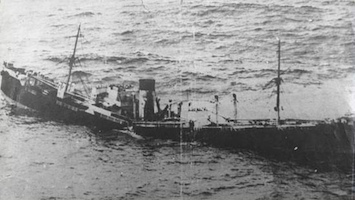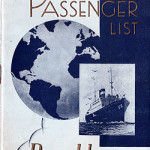In the opening months of World War 2, German submarine captains reported numerous torpedo failures. Time and again they watched their shots miss completely, fail to detonate once they reached their targets or detonate prematurely. U-boat fleet commander, Rear Admiral Karl Dӧnitz, estimated at least 30 percent of the torpedoes launched by his captains were duds. (See blog post “The Trouble with Torpedoes, Part 1,” April 1, 2016.)
One problem landed on Dӧnitz’s desk two weeks after the start of the war in early September, 1939. It involved the torpedo’s guidance systems that kept it on a pre-set course and depth once it left the submarine. These parameters were dialed into the torpedo before it was fired. After leaving its tube, the torpedo changed its course and depth as necessary in order to run true to its target.
The torpedoes delivered to the fleet at the start of the war were equipped with the course changing guidance system, but by mistake they had been fitted with stationary fins that did not allow them to be steered. When this egregious mistake was corrected, however, the success rate did not significantly improve.
Admiral Dӧnitz suspected most misfires were caused by the detonator, or pistol, the device that caused the torpedo’s warhead to explode once it reached its target. A sophisticated detonator, which could be set to explode the warhead either when it stuck a ship’s hull or detected the hull’s magnetic field, was adopted at the end of September 1939 as the standard for all torpedoes.
A contact detonation resulted when a torpedo struck its target several feet below the waterline and usually breached the ship’s hull. However, the explosion wasted much of its energy in the form of a large plume of water that erupted alongside the hull. As a result, one or two more torpedoes might be needed to sink a large ship.
By contrast, a magnetic detonation was designed to explode the warhead beneath a ship, where its energy would be more efficiently concentrated on the ship’s keel. The explosion usually broke the keel, breached the hull and sank the ship within minutes. Because such damage could be inflicted by a single torpedo, U-boat captains preferred the magnetic setting.
Magnetic detonation required the torpedo to pass close enough beneath the ship to detect its magnetic field. Maintaining the torpedo’s proper depth was critical to its success. In addition, the detonator had to be set at the proper calibration for the strength of the target’s magnetic field, which varied with the size of the ship. U-boat captains also needed to account for the Earth’s magnetic field, which changed depending on the U-boat’s distance from the magnetic north pole.
When the complaints began to pile up, the Torpedo Directorate, the German navy department charged with Torpedo design and development, questioned whether U-boat captains were accurately estimating the data used to calibrate the magnetic detonator.
Admiral Dӧnitz’s frequent complaints prompted the Naval High Command to establish a Torpedo Inspectorate to study the growing misfire reports. But if Dӧnitz thought his fleet’s torpedo problems were about to be resolved, he would be sorely disappointed, as we will see in out next blog.






